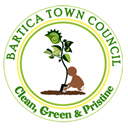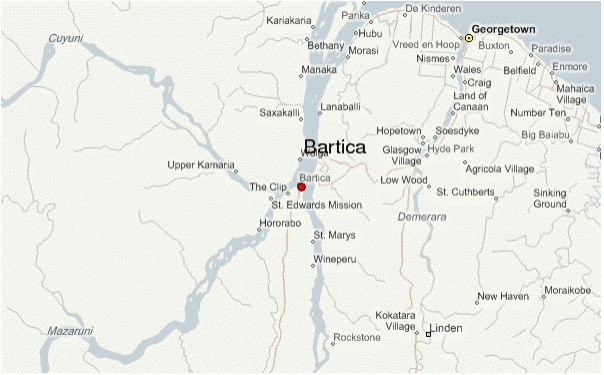Bartica is a small community situated on the Essequibo River, 80 km inland from the Atlantic Ocean (Map 1). It is perfectly nestled at the confluence of the Essequibo, Cuyuni and Mazaruni rivers bounded north-east by the Essequibo River, south by a forest that begins at Dog Point Road and west by the Mazaruni River.
Before becoming a town Bartica was approximately 12.95 km2 in land mass. Today, Bartica’s Township extends geographically to approximately 168,350 km2 with most of the new area largely underdeveloped and with low population densities. This community of approximately 15000 residents, popularly known as the “gateway” to Guyana’s interior is economically driven by gold, diamond mining and to a lesser extent the hospitality industries.
The past momentary improved performance of the mining sector and price spikes for precious metals on the world market created sporadic growth in economic and social activities in the local economy, leading to an upswing in consumer activities.
The ensuing promise of jobs and prosperity, among other factors, has made Bartica attractive to many non-Barticians, including multiple migrants, i.e., Brazilians, who have become residents of convenience. Managing the socio-economic explosion often associated with the upswing in the mining industry and the urban change on the local environment is essential to reducing poverty and environmental degradation, and pursuing a path of development resilience, consistent with the Sustainable Development (SD) goals.
High energy consumption and municipal waste-disposal problems are some common issues exacerbated by increasing population densities and demands on the local urban environments.
Once managed, urbanization can become a powerful driver for the achievement of the
sustainable development goals, inclusive of creating real opportunities for pursing a green economy development framework.
Bartica, as a new municipality has already begun work on the “Green Bartica Land Use Development Plan” which is intended to inform and guide Bartica’s orderly economic and social development process. Some of the considerations identified in the plan at the concept stage include areas for manufacturing, agro processing, large scale agriculture, municipal airport, modern sewage system, new road network, tourism parks, a landfill and new housing developments. It would also be reasonable to expect an increased level of migration with this level of development. Common to the success of these proposed activities are a cheap, clean and reliable source of energy, and the opportunity to use energy efficient technologies to achieve the desired objectives.
At present, Bartica relies solely on fossil based fuel oils for both electricity and transportation. Adopting immediate renewable energy and energy efficiency interventions would not only impact the existing status quo but also provide a unique opportunity to stimulate wider energy efficiency and renewable energy uptake in the future development of Bartica new Township, through the creation of the right enabling environment and the pursuant of effective project demonstrations.

